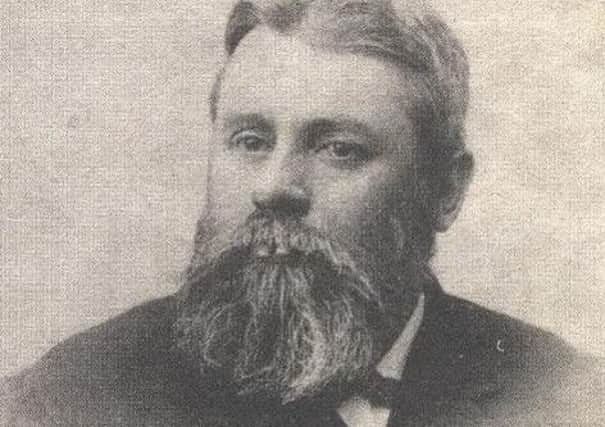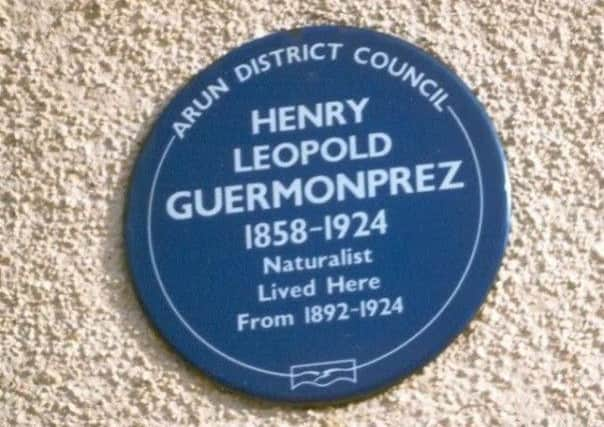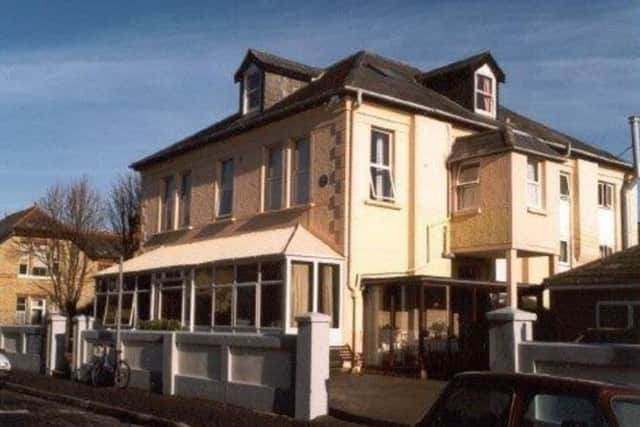An unselfish student of the world around us
This article contains affiliate links. We may earn a small commission on items purchased through this article, but that does not affect our editorial judgement.


The Curator of the Natural History at the Portsmouth Museum provided us with an insight into this ‘West Sussex naturalist’ when he wrote about him in 1974.
Henry was a self-taught natural historian and botanist who lived for 30 years in Bognor recording and collecting plants and wildlife around West Sussex.
Advertisement
Hide AdAdvertisement
Hide AdHe was the eldest child of a Belgian, Jean Henri Guermonprez, and an English wife, Charlotte Sarah.


Henry was an Associate of the Royal Institute of British Architects in 1880, unfortunately there appears to be no evidence that he practised this profession.
It would appear that Henry took it upon himself to care for his parents who were in ill health, and thus survived on a private income.
The family lived in Chelsea and visited Bognor several times finally moving here permanently around 1892.
Their first home was in a terraced house in Albert Road.


Advertisement
Hide AdAdvertisement
Hide AdFollowing the death of his father he moved to the larger premise of ‘Dalkeith’ in the same road, and where today both they can still be viewed, very little has changed since lived in by Henry.
By August 1897 Henry married Clara Sophia Phelps although little is known of her.
Henry Guermonprez had been interested in natural history, but not until his arrival in Bognor did it become the passion that we learn of today.
His initial collection contained a small amount of material from around the Chelsea area in the 1880s and 90s.
Advertisement
Hide AdAdvertisement
Hide AdUpon his arrival in West Sussex he really started to explore and collect material, all of which was very well documented and he also made it readily available to others.
He was well known as a skilled taxidermist and his work as a botanist was mentioned within Flora of Sussex.
Henry was also involved in the discovery of the remains of a 13th century chapel at Manor Farm, Nyetimber – now Barton Manor, which has now been converted into flats.
He was also appointed editor of the Selbourne Notes, a regular weekly article in the West Sussex Gazette, this task ultimately taken over by Martin Venables.
Advertisement
Hide AdAdvertisement
Hide AdI was also interested to read that he was involved in the finding of 90 Bronze Age axes or palstaves, within the Marshall Avenue area.
A paper that he wrote on this find was published in the Sussex Archaeological Collections soon after his death.
As you would imagine from a man who carefully catalogued his collection, and looked after his parents to conserve cost, he also did not like waste and he used whatever materials were to hand to make boxes for his collection; postcards to make boxes and old letters for labels. He would also collect drift cork from the beach to enable him to mount his stuffed birds on natural material.
He was very much a loner, but would always encourage young naturalists.
Advertisement
Hide AdAdvertisement
Hide AdHis work and collections are not as well known as they perhaps should be.
This was due in part to the nature of the man – quiet, unassuming and ‘living a retiring life.’
He also did not have many papers published, which would have ensured that his collection would have been more widely known.
On his death, the West Sussex Gazette of 25th December 1924 said of him: “The desire of the genuine student to make plain and to share unselfishly with all who sought them, the stores of patiently hoarded knowledge he undoubtedly possessed,” as one of his “most characteristic of his personal attributes.”
The report continued that he “lived a retired life”.
Advertisement
Hide AdAdvertisement
Hide AdFor a man so interested in his subject he apparently took no part in the activities of national societies, which were beginning to flourish in what was becoming known as the ‘heyday of the amateur naturalist.’
To assist others he did publish a number of papers for the scientific periodicals, but his correspondence appeared to deal only with matters relevant to the subject in hand.
After his death, his collection remained at ‘Dalkeith’ under the ownership of his family, until 5th February 1943 when a bomb fell in Albert Road near the house causing structural damage and endangering his irreplaceable collection.
The Group Leader of the Civil Defence Service was on duty, and knowing where the collection was held he arranged for its temporary housing – this was Martin Venables.
Advertisement
Hide AdAdvertisement
Hide AdIn 1944 West Sussex County Council accepted the gift from the Guermonprez family of a gift of the collection, under the guidance of the Curator of the Lyon Street Museum, Mr Venables.
In December a reader wrote to the Bognor Regis Post saying: “It is with great interest that I see that Mr H Guermonprez has offered the contents of his late father’s museum to the town.”
The writer continued to explain the contents of this museum, as a “fine collection, illustrating the natural history of this part of Sussex in all its aspects”.
Much of his collection was housed in the museum in Lyon Street before its final move in 1970, to Chichester Road in Bognor Regis.
Advertisement
Hide AdAdvertisement
Hide AdWhile searching the internet for information, I came across a paper written by Martin Venables in 1939 about ‘Picking Mine’ apparently an old Bognor Industry.
Martin recalls Henry: “His enthusiasm was most infectious, his zeal and industry reflected in his enormous collection.”
He then recalls that it was from Henry that he learned about the Bognor Industry, which Henry had explained in one of his ‘Selbourne Note’s.’
The industry depended on certain natural minerals.
It was known as ‘Picking Mine,’ being an abbreviation of minerals.
Advertisement
Hide AdAdvertisement
Hide AdThe industry had its hey-day between 1850 and 1870. Apparently the mineral ‘Bognor’s Copperas,’ was transported by colliers that beached off the coal yard of Mr Osborn, at the seaward end of Lennox Street.
There is more information on the internet on this particular subject. Also a visit to the West Sussex Record Office in Chichester would provide more information on a subject of which I have very little knowledge.
Sadly I can only remember a small part of the Guermonprez collection when it was displayed in the foyer of the Regis Centre, before its removal to Portsmouth, which much of it remains.
I find it astonishing that this collection apparently included over 1,800 birds, 85,000 insects, and approximately 2,000 scientific works on all branches of Natural Science.
Advertisement
Hide AdAdvertisement
Hide AdI am sure that today it would be very difficult to find and reform this collection, but it would be a superb collection for the town.
Don’t miss out on all the latest breaking news where you live.
Here are four ways you can be sure you’ll be amongst the first to know what’s going on.
1) Make our website your homepage at www.chichester.co.uk/
2) Like our Facebook page at www.facebook.com/ChichesterObserver
3) Follow us on Twitter @Chiobserver
Advertisement
Hide AdAdvertisement
Hide Ad4) Register with us by clicking on ‘sign in’ (top right corner). You can then receive our daily newsletter AND add your point of view to stories that you read here.
And do share with your family and friends - so they don’t miss out!
The Chichester Observer - always the first with your local news.
Be part of it.